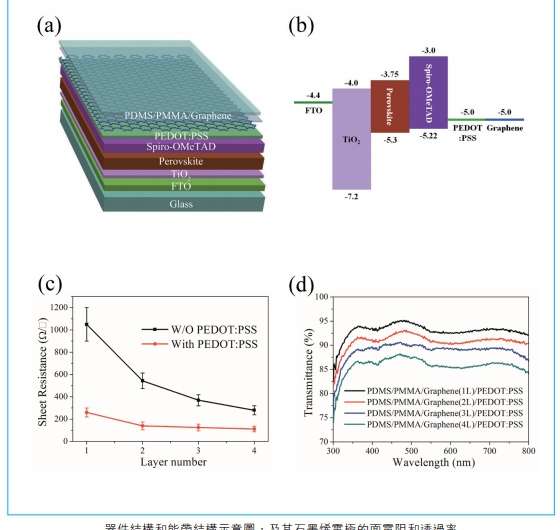Semitransparent perovskite solar cells with graphene electrodes

A researcher at The Hong Kong Polytechnic University (HK PolyU) has developed the first-ever made semitransparent perovskite solar cells with graphene as electrode. With simple processing techniques, solar cells with high power conversion efficiencies can be fabricated at low cost.
Firstly, the conductivity of graphene was dramatically improved by coating a thin layer of conductive polymer during the lamination process of graphene and perovskite layer. Secondly, multi-layer graphene is used as electrodes to further improve the efficiency of power conversion. The sheet resistance of the electrode could be further reduced while maintaining the high transparency of the electrodes. Lastly, the performance is further optimized by improving the contact between the top graphene electrodes and the hole transport layer on the perovskite films.
Because of the excellent mechanical flexibility of graphene and the convenient preparation of the devices, this invention can be used for the mass production of the semitransparent perovskite solar cells with printing or roll to roll process.
Special Features and Advantages
- Semitransparent enables to be used for buildings
- Transparency can be controlled
- Can absorb light from both sides
- High power conversion efficiency ~ 12%
- Easy fabrication and low cost
Applications
Semitransparent solar cell technology can be integrated into the building design, replacing conventional building materials. Such as, facades, shelters, louver, windows and rooftops, etc.
Provided by ResearchSEA





















